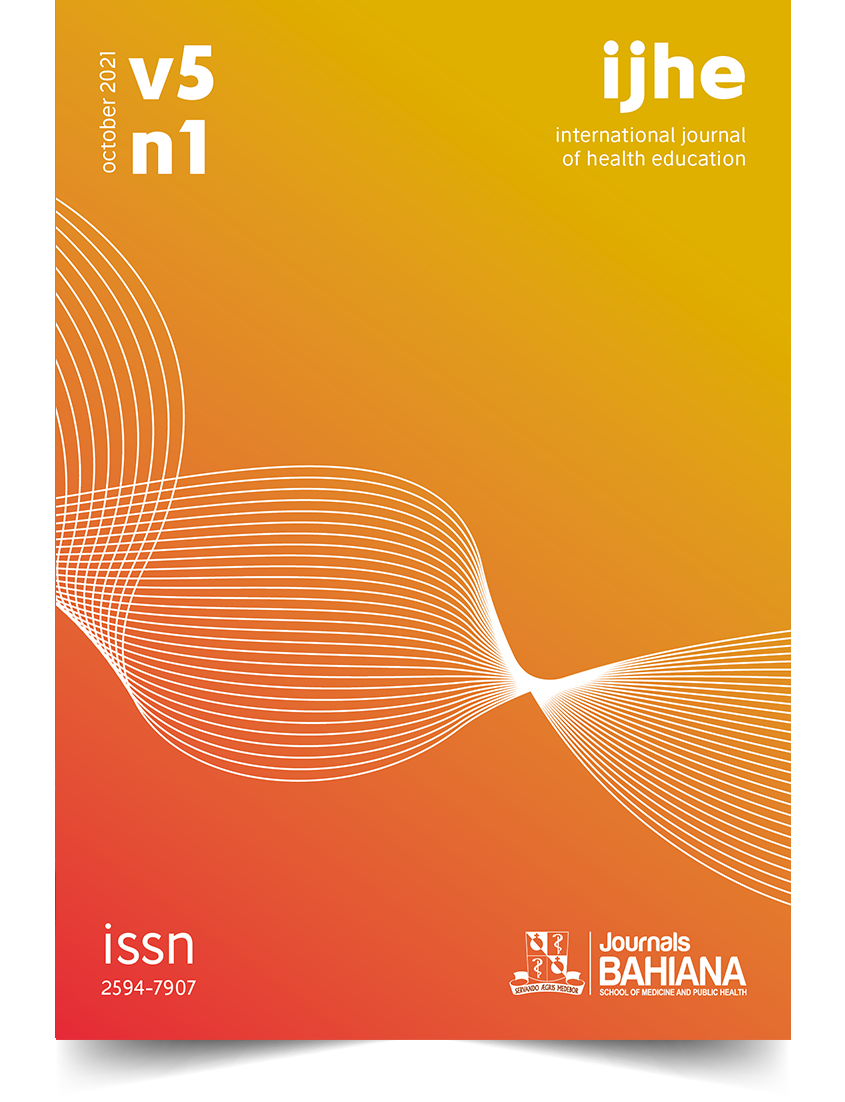Relation between syphilis cases and sex education of women in a family health unit in the city of Lauro de Freitas
DOI:
https://doi.org/10.17267/2594-7907ijhe.v5i1.3315Keywords:
Syphilis. Sexually Transmitted Infections. Treponemal Infections. Sex education.Abstract
OBJECTIVE: To verify the relation between syphilis cases and sex education in a Family Health Unit in the city of Lauro de Freitas. METHOD: This was a cross-sectional study, approved by the Research Ethics Committee of the Metropolitan Union for the Development of Education and Culture (UNIME). The target audience was women aged 18 to 60 years from a specific covered area of a Family Health Unit in Lauro de Freitas-BA. A questionnaire prepared by the researchers was applied to 114 participants. RESULTS: 55 (48.2%) of the women studied considered themselves black and 31 (27.2%) had more than 11 years of study (high school complete). 62 (54.4%) were legally single, 84 (74.3%) had an active sex life, 87 (77.0%) had a steady partner. 113 (99.1%) women believe it is women's right to demand condom use. Only 7 (8.8%) of those surveyed reported having syphilis. 79 (69.3%) considers that they have good knowledge regarding sex education. 104 (91.2%) answered that the contagion is through sexual intercourse without a condom, but 60 (52.6%) of them have little information about the disease in question. CONCLUSION: The present study shows that 52.6% of women know little or nothing about syphilis. In addition, it was noted that when asked about the ways of syphilis contamination, none of the 114 women interviewed were able to answer all the correct alternatives. So, it is possible to conclude that it is necessary to implement new interaction public policies between the family health unit and the community.
Downloads
Downloads
Published
Issue
Section
License
Copyright (c) 2021 Juliana Fernandes Oliveira, Bruna Meyer C. Martins Macedo, Anne Moreira Cordeiro, Karoline Freitas Magalhães, Catarina Ferreira Freitas, Amanda Queiroz Lemos

This work is licensed under a Creative Commons Attribution 4.0 International License.
This work is licensed under a Creative Commons Attribution 4.0 International License.



